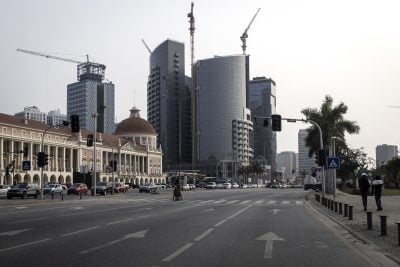Will Africa’s gold producers continue to make hay while the sun shines or will gold’s bull run simply run out of steam?
Even those with little interest in metals, jewellery or even business in general cannot fail to have noticed the seemingly inexorable rise in the value of gold. In 10 years, its price has more than quintupled, rising from $289.60/oz to an average of $1,572/oz in 2011.
Gold continued its remarkable bull last year when it rose 28%. Last summer the yellow metal hit a record high of $1,900.30/oz as the US debt crisis hit its peak, stock markets slumped and investors panicked about the Eurozone crisis. Since then prices have gone off the boil but nevertheless remain remarkably resilient – and are currently simmering away at around $1,700/oz.
Naturally this surge in prices has been beneficial to Africa’s producers, who have capitalised on rising prices by stepping up production. Tanzania, for instance, saw earnings from gold exports increase 62% in 2010, to $1.36bn, as output rose 31% to 38t, according to the country’s central bank.
Burkina Faso’s gold output has also been growing, rising from 11.73t in 2009, to 25.6t in 2010 and an estimated 33.74t in 2011. At the start of February, Cluff Gold, which owns the Kalsaka gold mine in the country, purchased a second site, Sega, for $30m in cash and shares Rangold Resources’ profits more than tripled last year from $145m to $485m as its African production rose 58%. The company mined 697,000 oz last year and is looking to grow that figure 20% this year. Randgold is investing $1bn on the continent over the next two years in projects such as in its Kibali joint venture with AngloGold Ashanti which is expect to yield 600,000 oz a year in 2014.
Also looking to expand is African Barrick Gold, which is looking to increase its output from 700k oz last year to 1m oz this year, with a medium-term goal of 1.4m oz by 2020, However, Africa’s largest gold-producing nation South Africa has had a number of challenges to contend with, such as rising costs, in particular for energy. South African production peaked at 1,000t in 1970 yet fell to under 192t in 2010, an amount 6.4% lower than 2009’s 205t. Chinese gold production rose 5.9% to 361t in 2011. China’s output overtook South Africa’s back in 2007 and it is the world’s leading producer.
The nationalisation issue
The South African mining sector was shaken last year by calls for its nationalisation, driven by the youth wing of the ANC influenced by the fiery Julius Malema. The ANC commissioned a study into the matter which concluded that nationalisation would not be a solution but did question whether the state received a fair enough share of the rents generated by the sector.
Mines Minister Susan Shabangu has reiterated that nationalisation is not a viable policy option but, as previously discussed in African Business, the spectre of resource nationalism still haunts investor attitudes to South Africa as in other countries. Governments are keen to ensure they benefit from rising prices yet are also keen to reach an appropriate compact with industry that does not throw the baby out with the bath water.
For instance, Africa’s second-largest gold miner, Ghana, has announced plans to raise greater revenues from the sector. Ghana mined about 82t in 2010 and the country accounts for around one third of African production. Newmont Mining, which mined 545k oz in Ghana in 2010, plans to double its African production by 2015. Nevertheless Finance Minister Kwabena Duffuor’s 2012 budget envisages increasing corporate taxes on mining companies from 25% to 35%, as well as the introduction of a windfall tax of 10%. Similarly, Zimbabwe’s Finance Minister Tendai Biti announced an increase in the royalties on gold, from 4.5% to 7%. “We do not feel that we are getting ‘what belongs to Caesar is going to Caesar’ with regards to gold and platinum,” he said. Production there peaked in 1997 at 27t. The country forecast production at 13t in 2011 a rise of 35% over 2010. Gold production is expected to more than double to 28t this year.
Côte d’Ivoire is also stepping up its output. The country mined 12t in 2011, with a production target of 20t by 2020.
Demand factors
Fundamental to price development are going to be investment flows and the prospects for the global economy as a whole. The structure of the market has changed as prices have risen. In 2000, over 80% of gold demand was for jewellery, around 12% for industrial use and the rest was for investment. By 2010, jewellery demand had fallen to 50% of overall demand, industrial use remained static but investment demand rose to nearly 40%.
Last year investment flows into gold rose 20% to total $80bn. Holdings of gold for investment, via the increasingly popular exchange traded funds, which rose by 20% in value terms in 2010, saw growth slow to 7% last year. In fact, investment in tonnage terms fell 7%.
With US debt levels largely being left on the back burner, there is the possibility of further quantitative easing. A weaker dollar leads to higher dollar-denominated prices and may lead to an increase in inflation.
Whilst gold is a traditional hedge against inflation, too much will result in higher interest rates and thus an increase in the opportunity cost of holding gold. Certainly the prospect of sustained low interest rates in the US is aiding prices at present. The Federal Reserve announced in January that it does not expect to raise rates before 2014.
Another important trend is central bank buying, with Mexico buying 99t last year and Russia 65t in 2011. This and other official purchases taken as a whole amounted to 430t last year. Rumours abound that China’s central bank is also buying, diversifying its vast reserves holdings, and possibly stockpiling much of its domestic production.
Philip Klapwijk, Global Head of Metals Analytics at metals consultancy Thomson Reuters GFMS, commented recently, “We are conscious that the Eurozone crisis is far from over and its impact on liquidity, the value of the US dollar and attitudes to risk could all become very apparent, particularly once buying linked to the Chinese new year is behind us.”
According to GFMS, jewellery demand fell 2% last year as mine production rose about 3.8%. They anticipate first half production will rise around 3.2% to 1,400t, as scrap extends last year’s 2% fall, losing 3.1% to stand at 734t. Jewellery demand over the same period is expected to fall 3.1%.
Chinese and Indian demand accounted for 46% of total gold demand in the first three quarters of last year.
Production costs
One of Africa’s biggest gold miners AngloGold Ashanti, which estimates production for 2011 in the region of 4.6m oz, remain bullish. On top of investments worth $1.6bn in 2011, AngloGold Ashanti has said it has further plans to invest between $1.6-2.2bn in 2012 and 2013 in order to raise production from its current 4.5m oz level to 5.5m oz by 2014–5.
Intriguingly, the company’s chief executive Mike Cutifani commented recently that “$1,600 is the minimum producers need to get a return on their investments” and estimates a price range of $1,600-2,200 for 2012.
Of course, one of the major factors affecting price is the cost of physically extracting the metal. Total cash cost figures are designed to measure these costs per unit and have risen for the last 10 quarters from $445/oz to $665/oz. The Thomson Reuters GFMS produces an all-in cost metric, designed to reflect the full marginal cost of production which rose 10% last year to $935/oz. Cash costs in South Africa are well above those in Australia as well as North and South America, and this is a constraint that needs to be addressed.
Significant price expansion for gold is contingent on its safe haven appeal in times of crisis. Consultancy Natixis believes investors are now more ready to favour the dollar rather than gold, unless the uncertainty is strongly US focused, as during the debt crisis last year.
In the absence of strong central bank support, the consultancy expects prices to fall to an average of $1,450/oz in 2012.
In contrast, Philip Klapwijk observed that “We could even see prices just over the $2,000 mark later this year or in early 2013.”
Whilst predictions for the year ahead are far from unanimous, it seems likely that prices will drift down in the absence of a major global economic catastrophe (for example, a Eurozone default that results in Chinese growth being severely constrained), but are unlikely to fall too severely, given the level by which extraction costs have risen.
Want to continue reading? Subscribe today.
You've read all your free articles for this month! Subscribe now to enjoy full access to our content.
Digital Monthly
£8.00 / month
Receive full unlimited access to our articles, opinions, podcasts and more.
Digital Yearly
£70.00 / year
Our best value offer - save £26 and gain access to all of our digital content for an entire year!

 Sign in with Google
Sign in with Google 




